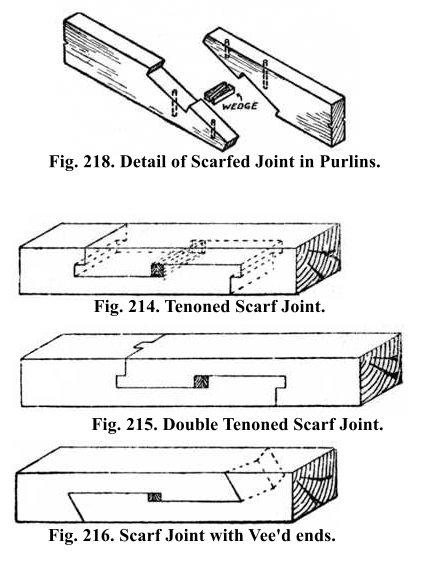I have to join some 4.8m lengths of 200 x 47 timber ... end to end
This is on show so no desire to use fish plates or any metalwork ....
The solution seems to be to use a Scarf joint i.e:
http://tinyurl.com/ptks6ln
I have only created sliding scarf joints, not these ones with stops.
Is there a particular technique to doing these ...
Opt A ... I thought of simply marking out and hand-sawing as best I can ... then using the one 'cut' to be the template for the next end.
The issue is trying to get a very neat joint in 8x3 timber with a jack saw may be stretching things ......
Opt B .... rough cut to within 1/4" or so, and make a template out of plywood and run a router with collar and 2" worktop cutter around template.
Would cut such that angled 'glue area' is twice the depth, i.e., at least 400mm long.
Once I have them cut will put in plenty of PVA D4 glue clamp, and also drill some holes from underside through the joint and glue in some 10mm dowels, they won't go right through so not open to rain form above.
Open to any other ideas, or practical tips.
This is on show so no desire to use fish plates or any metalwork ....
The solution seems to be to use a Scarf joint i.e:
http://tinyurl.com/ptks6ln
I have only created sliding scarf joints, not these ones with stops.
Is there a particular technique to doing these ...
Opt A ... I thought of simply marking out and hand-sawing as best I can ... then using the one 'cut' to be the template for the next end.
The issue is trying to get a very neat joint in 8x3 timber with a jack saw may be stretching things ......
Opt B .... rough cut to within 1/4" or so, and make a template out of plywood and run a router with collar and 2" worktop cutter around template.
Would cut such that angled 'glue area' is twice the depth, i.e., at least 400mm long.
Once I have them cut will put in plenty of PVA D4 glue clamp, and also drill some holes from underside through the joint and glue in some 10mm dowels, they won't go right through so not open to rain form above.
Open to any other ideas, or practical tips.



